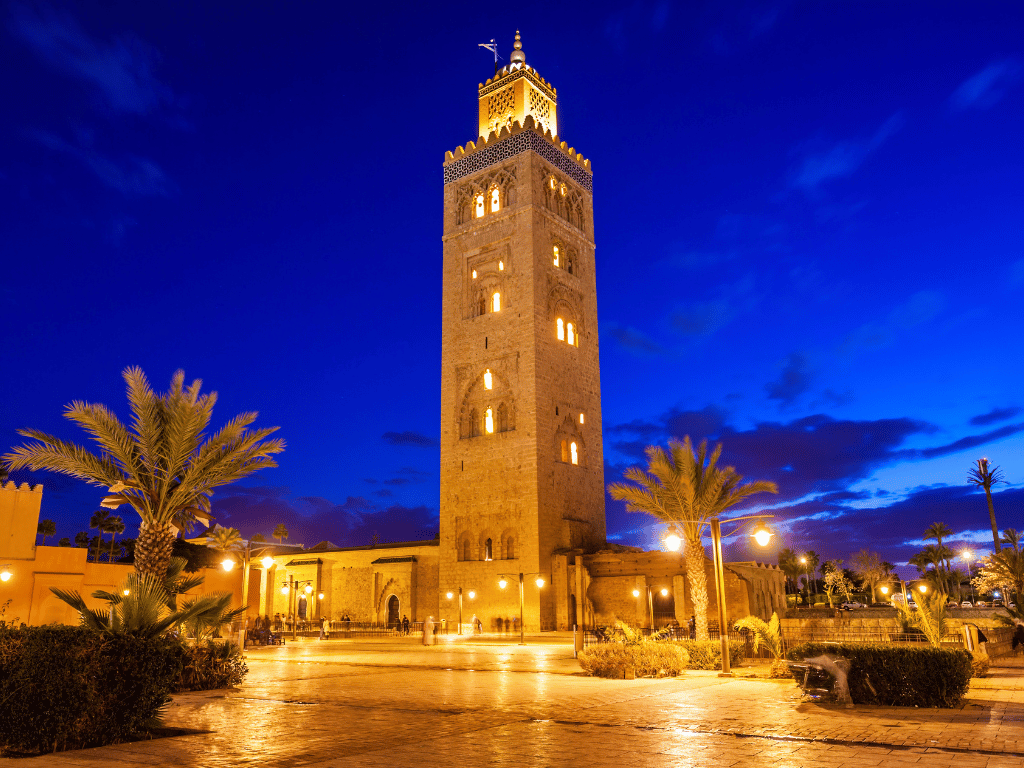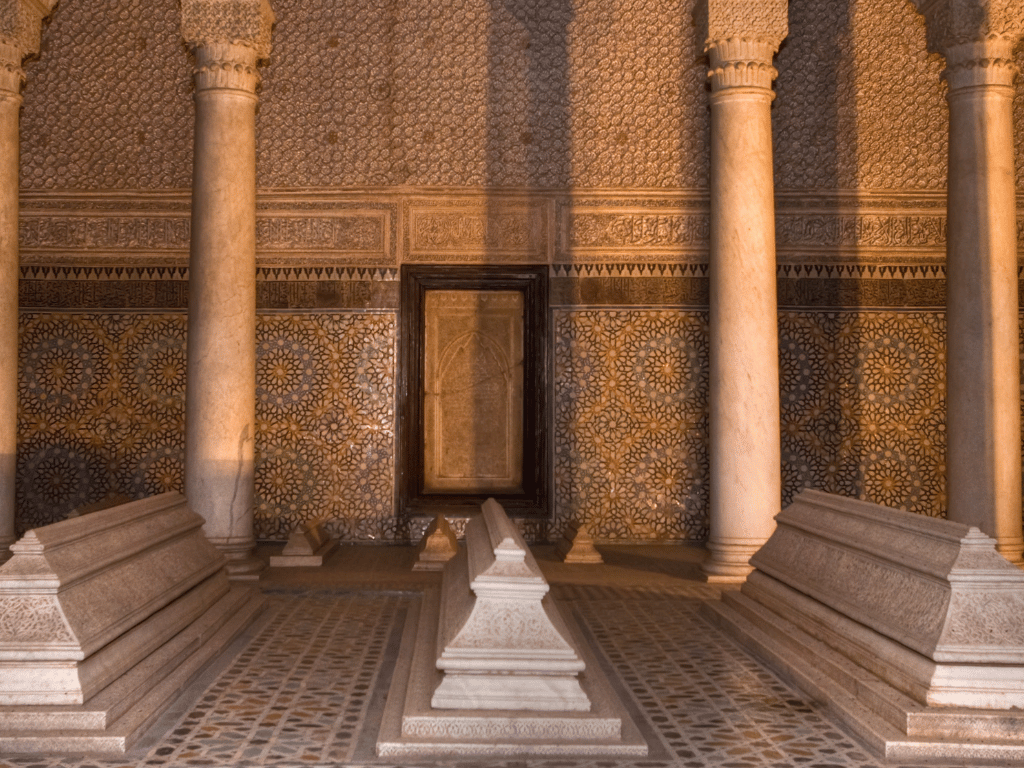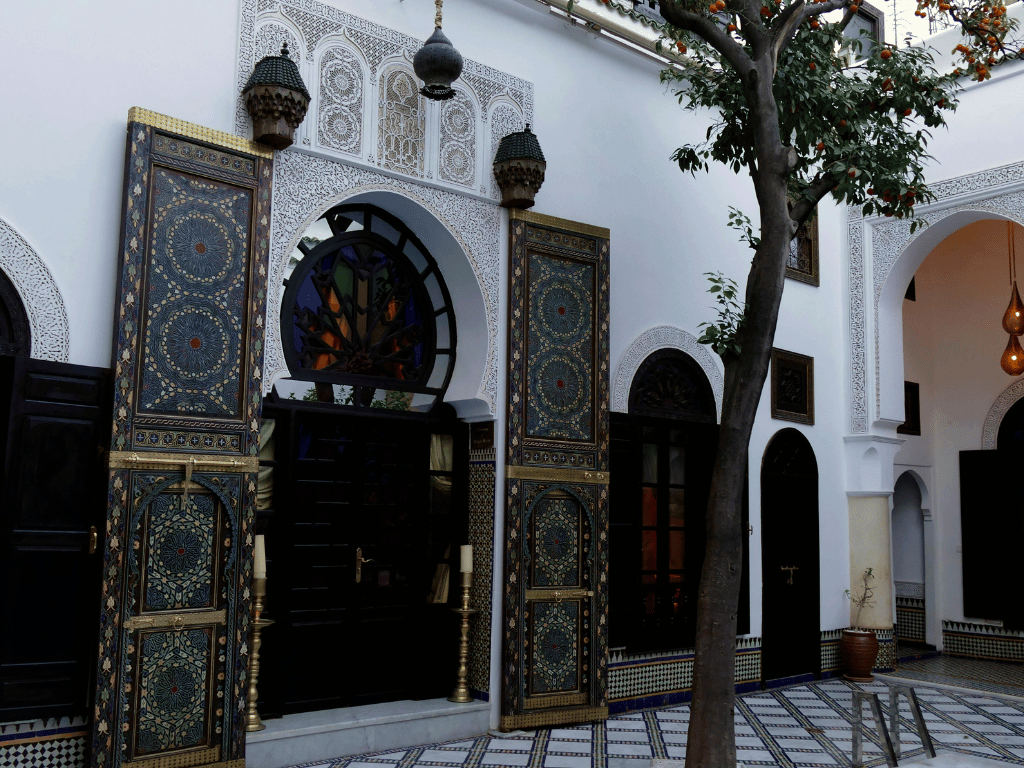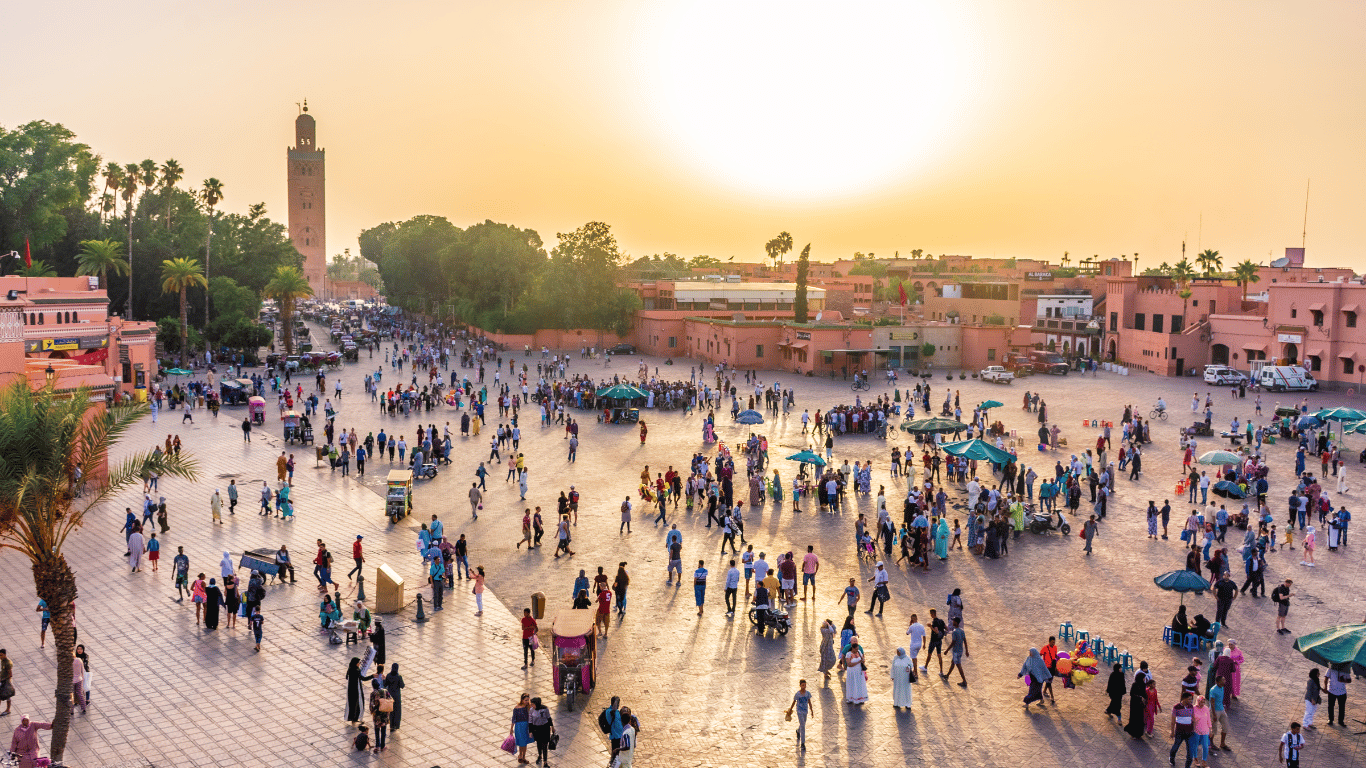Marrakech Morocco was an important city in Morocco for business. And peace under different rulers for centuries, even with this historical record, only some would have expected. In the late 20th century, it became a top destination. It has become a favored choice for rich and well-known guests from around the world. Those looking for an unknown place for relaxation actively seek the city.
History
Established in 1062 by Yusuf ibn Tashfin, Marrakech became the Capital of the Almoravid power.
Yusuf ibn Tashfin, the head of the Moroccan Almoravid empire, is regarded as one of the most prominent leaders who actively facilitated an Islamic system in the entire country, Muslim Spain, and the Maghreb.
A unique religious group from the High Atlas, the Almohads, seized from the Almoravids in 1147.
Refusing to join the city, the Almohad Caliph Abd al-Mu’min claimed that the mosques were not perfectly orientated.
Marrakech Capital of the Kingdom
They kept Marrakech as the Capital and left it with a Caliphate complex, a political and service center.
They are in the Kasbah section and Lits Gate, Bab Agnaou. Note the record with a capital H.
The kingdom extends to Tripoli. The city glows on the artistic and creative class, and influential figures such as Averroes, jurist, and philosopher or Ibn Tobfail, doctor and scientist, settle there. The Koutoubia Mosque was built in 1197. A difference in dynasty occurred in 1269 with the Berber Merinids. The Capital is moved to Fez.
Attractions and What Should Be Done in Marrakech, Morocco
Many popular landmarks and museums exist within the old quarter known as the Medina. There is a restriction on traffic, allowing only pedestrian or scooter access in many areas.
Outside the Medina, in the latest city neighborhoods of Gueliz and Hivernage, wide boulevards abound, hosting numerous five-star hotels and nightlife establishments, along with offices and local businesses. These activities, along with the outdoor interests of the nearby Atlas Mountains, make it an attractive destination for visitors of all ages and attractions.
Here are probably the best puts and encounters worth investigating out traveling
Koutoubia Mosque

This big mosque and the coincidental gardens, plaza, and walkways discovered within the medina date to 1147. Almohad Sultan Abd el-Moumen chose to create a mosque with features that would make a new standard for Islamic architecture throughout the Western globe. Despite the replacement or destruction of sections of the original mosque over the centuries, the mosque maintains a large prayer hall with a capacity for 25,000 worshipers. It features a 230-foot-high, red sandstone minaret that towers over the city and serves as a city landmark.
Jemma el-Fna Square
Tourists and locals gravitate to the center of the Medina. Subsequently, restaurants, shops, and entertainment cover a massive open square. The Jemma el-Fna was initially a marketplace but has since developed into an open-air carnival. It pulsates with views, sounds, and smells, effortlessly attracting crowds of onlookers and participants. During the day, you are likely to encounter snake charmers, fortune tellers, and tribe partners posing in standard dress for photos while playing instruments. Storytellers and ladies using henna tattoos further contribute to the vibrant scene. Fruit and drink stands are always present. As the day progresses, by late afternoon, dozens of makeshift restaurants and food stands are erected. They offer grilled meats, sweets, and fruits to buyers.
Saadian Tombs

The Saadian tombs are a good measure of the secret looks and contradictions of Moroccan culture. The Saadian dynasty controlled Morocco for over a hundred years, starting in the late 1600s, and used Marrakech as their capital city, pitching ornate burial environments and tombs for the royal family and the nobility.
Riads

Luxury properties, including standard hotels such as the La Mamounia Hotel, a traditional establishment built around a palace, often earn a place among the top hotels in the globe.
For some people, one of the largest interests in seeing other Moroccan cities is to remain in a riad. Traditional Moroccan homes in the Medina have been updated and transformed into guesthouses for tourists.
Food
There is a wide assortment of traditional Moroccan dining options and international cuisine available in Marrakech. Within the Medina and near the Square, dozens of family-owned restaurants serve regional favorites. To begin with, as starters, soups and salads are typical. Moving on to the main course, various tagines made with lamb, chicken, or beef are served, along with seafood dishes, delicious bread, and couscous. Mint tea is still available, and alcoholic drinks can be enjoyed at establishments with a Western clientele. Sweets and cakes are a typical feature at the supertime. Moreover, especially in New Town, a unique feature emerges in a wide variety of dining choices. Adding to the diversity, the New Town stands out for its eclectic mix of dining options.
Journeys
Marrakech, Morocco, is all about setting up for road trips or expeditions to unique regions in the Chartbook Mountains. For example, traveling east for four hours across the mountains leads to the well-known village of Ait Benhaddou. Another option is traveling for a couple of hours to see the waterfalls at Cascades Ouzoud. Moreover, going southeast for an hour or so allows a visit to Jbel Toubkal mountain, the second tallest peak in Africa. Alternatively, visitors can explore the picturesque Ourika Valley.
I advise travelers to hire a personal driver familiar with the site to navigate these mountain roads.
Tips for Tour Marrakech Morocco
When to Go
- Marrakech has pleasant weather during the spring and fall seasons. Daytime temperatures range from the 70s to 80s, with nighttime temperatures in the 60s.
- The city sits near the High Atlas Mountains, offering a partial barrier to the desert heat and serving as a source of water from peak runoffs and snowmelt.
- Despite its generally mild climate, Marrakech can experience temperatures soaring above ninety degrees during the summer. In contrast, the winter months witness temperatures in the forties during the evening. Therefore, May, September, and October are deemed as the best months to visit it.
How to Get Here
Marrakech is a famous destination for tourists from European areas and other cities in Morocco. It is also attracting a growing number of American tourists.
- The airlines with the most direct flights to the city include European-based regional carriers like EasyJet and TAP Air Portugal.
- The national airline, Royal Air Morocco, also operates direct flights.
- Unfortunately, there are currently no direct flights from the United States to Marrakech.
- Major international carriers, such as Air France and Iberian Airlines, offer daily flights to Marrakech from Paris, London, and Madrid.
- These flights often have connections to numerous cities in the U.S. through their American partner airlines, including Delta and American Airlines.
- For travelers seeking alternative transportation, there is fast road access by car from Casablanca on the A2.consequently, taking approximately 2.5 hours.
- Additionally, a three-hour train service is available from downtown Casablanca to Marrakech, Morocco.

